The allure of a princess cut diamond can evoke both thoughts of luxury and expense. While there is some truth to that notion, it’s not entirely accurate.
Princess cut diamonds have gained immense popularity and show no signs of losing their appeal anytime soon. It’s understandable that many of you might be intrigued by these diamonds and eager to gain comprehensive knowledge about them. If that’s the case, you’ve come to the right place.
Today, we will delve into various aspects of princess cut diamonds, covering:
- What exactly is a princess cut diamond?
- Understanding the anatomy of these diamonds.
- Examining the clarity of princess cut diamonds.
- Discussing the color of princess cut diamonds.
- Evaluating their value for the price.
- Exploring the reasons behind their widespread popularity.
If any of these topics pique your interest, we encourage you to continue reading, as we promise you’ll discover something new and informative along the way!
DESIGN YOUR OWN ENGAGEMENT RING: START WITH A SETTING OR START WITH A DIAMOND. IT’S REALLY UP TO YOU!

What Is The Princess Cut Diamond?
Before we delve into the deeper aspects of princess cut diamonds, let’s start with the basics. What exactly is a princess cut diamond? It’s essential to answer this question as it forms the foundation of our discussion.
Princess cut diamonds are renowned for their distinctive square shape with sharp, geometric facets. The cut itself was influenced by the french cut and quadrillion cut, popular diamond cuts in the first half of the 20th century. While these cuts had a square shape, they lacked the consistency that the creators of the princess cut sought to improve upon. The credit for developing the princess cut goes to Betazel Ambar and Israel Itzkowitz, who introduced it in 1980.
The princess cut quickly captured the attention of buyers and swiftly became one of the most adored and sought-after diamond cuts. Its popularity soared, and we’ll delve into the reasons behind this later in the article.
Notably, the princess cut is frequently utilized in engagement rings. People who own these diamonds often wear them daily and everywhere they go. This highlights the widespread popularity of princess cut diamonds, particularly in engagement ring settings. However, they can also be found adorning earrings on occasion.
In summary, princess cut diamonds are cherished for their modern square shape and were invented in the latter half of the 20th century. For further details, continue scrolling to discover more!
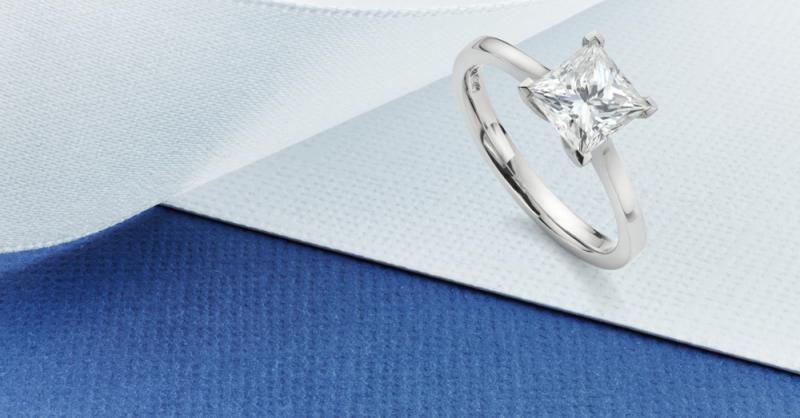
Anatomy Of The Princess Cut Diamond
When it comes to fancy-looking cut diamonds like the princess cut, there is a wide range of variations in cut grades. Unlike some cuts that have predefined expectations, there is no fixed standard for what a princess cut should look like.
These variations can include factors such as the number of cuts on the pavilion, and it all boils down to personal preference. Some individuals may prefer certain characteristics while others may prefer different ones when it comes to their princess cut diamonds.
Regarding the crown of a princess cut diamond, which is the top part visible when someone looks at it, it can have either French corners or bezel corners. Both options are valid and depend on the desired aesthetic.
A typical princess cut diamond usually has between 50 and 58 facets, depending on how it is cut. The majority of the facets are located on the crown and pavilion, with only a few on the girdle.
Additionally, princess cuts often exhibit two to four chevron patterns. These patterns appear as cross patterns when viewing the diamond from above. If a diamond has two chevron patterns, it reflects more pronounced flashes of white or colored light. On the other hand, if a diamond has four chevron patterns, it results in more scintillation, producing smaller flashes of light.
Considering the various variations, it is crucial to carefully examine princess-cut diamonds before making a purchase. These differences in appearance and look can greatly impact your preference.
While there are no strict guidelines for the princess cut, you may find certain variations of this cut more appealing to your taste. Therefore, don’t hesitate to explore different sources and locations when searching for these diamonds.
Feel free to explore and discover the princess cut diamonds that resonate best with you!
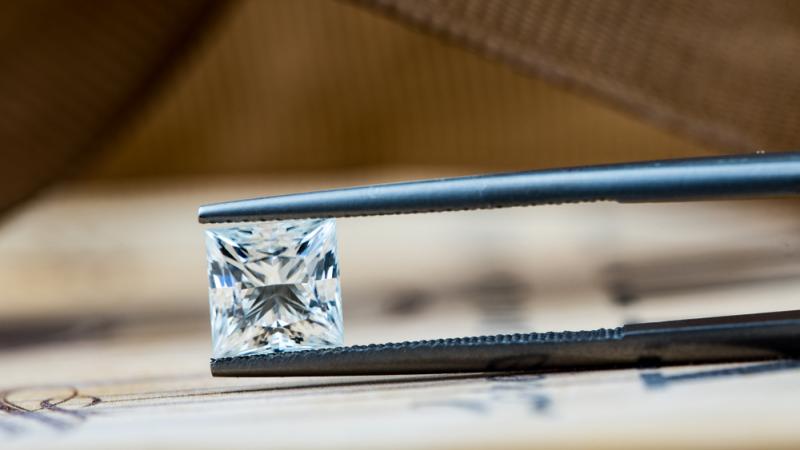
Clarity
Clarity plays a significant role in diamond selection, as it directly correlates with the rarity and value of a diamond. When it comes to princess cut diamonds, achieving a high level of clarity is particularly important.
The cut of princess diamonds allows any imperfections or inconsistencies to be more easily visible, sometimes even to the naked eye. Hence, clarity becomes a crucial factor in assessing these diamonds.
To provide a reference, here is the GIA clarity chart, which outlines the clarity grades to look for in princess-cut diamonds:
- Flawless (FL)
- Internally Flawless (IF)
- Very, Very Slightly Included (VVS1 and VVS2)
- Very Slightly Included (VS1 and VS2)
- Slightly Included (SI1 and SI2)
- Included (I1, I2, and I3)
It is evident that you should avoid princess cut diamonds with lower clarity grades, such as included and slightly included diamonds. These have the lowest clarity and should only be considered if there are no other options available.
The most commonly seen clarity grades in jewelry stores, particularly for engagement rings and earrings, are very slightly included (VS1 and VS2) and very, very slightly included diamonds.
The ultimate goal is to acquire diamonds with internally flawless (IF) or flawless (FL) clarity grades. These are considered the best diamonds in terms of clarity. However, there can be exceptions.
In some cases, you may come across a very, very slightly included princess cut diamond that appears free of visible imperfections. This indicates that it was cut in a way that hides the inclusions. If you encounter such a diamond, it can be a worthwhile choice to pursue.
Remember, the higher the clarity grade, the rarer and more valuable the diamond becomes. So, strive for diamonds with impeccable clarity, unless you find a unique case where a very, very slightly included diamond appears flawless to the naked eye.
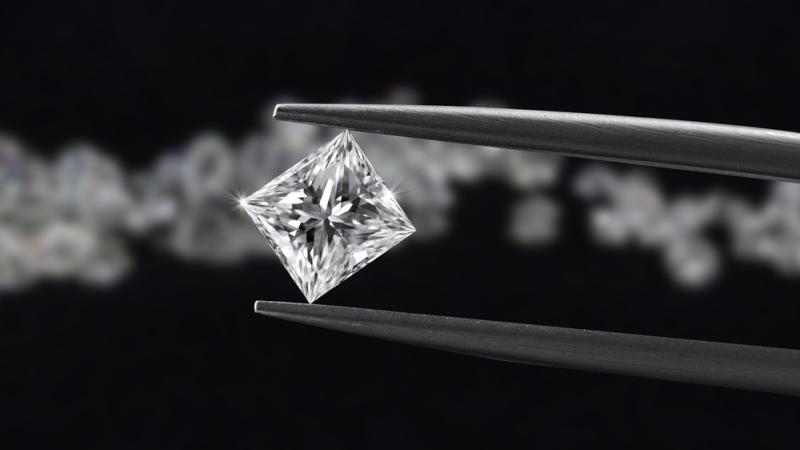
Color
When it comes to special jewelry pieces like engagement rings, it is crucial to pay attention to the color of the diamond, especially in the case of a princess-cut diamond.
There are various color variations in diamonds, but for princess cut diamonds, it is ideal to choose ones that are exceptionally clear and free from any noticeable undertones.
One undertone that complements princess-cut diamonds well is a purple undertone, as it can create a stunning combination with the cut. However, most princess-cut diamonds are sold without any undertones, appearing clear and transparent. This simplicity is often desired for engagement rings, where the overall tone of the ring should be understated, featuring a simple setting and stone.
For this reason, it is advisable to select a princess-cut diamond that falls within the colorless range on the diamond color spectrum. This is where the clearest diamonds can be found.
Diamonds are available in various colors, and it can be challenging to remember them all. To simplify, think of diamonds as coming in all the colors of the rainbow, as well as white, black, and gray diamonds. While these different colors can be captivating, princess-cut diamonds should ideally exhibit minimal color. The focus should primarily be on the cut rather than the color.
If you prioritize the color of a diamond over the cut, you may want to explore other cuts, such as the emerald cut, which can showcase a broader range of colors.
However, rest assured that princess-cut diamonds can look stunning even when the emphasis is not on their color. The brilliance and elegance of the cut itself are enough to create a captivating and beautiful diamond.
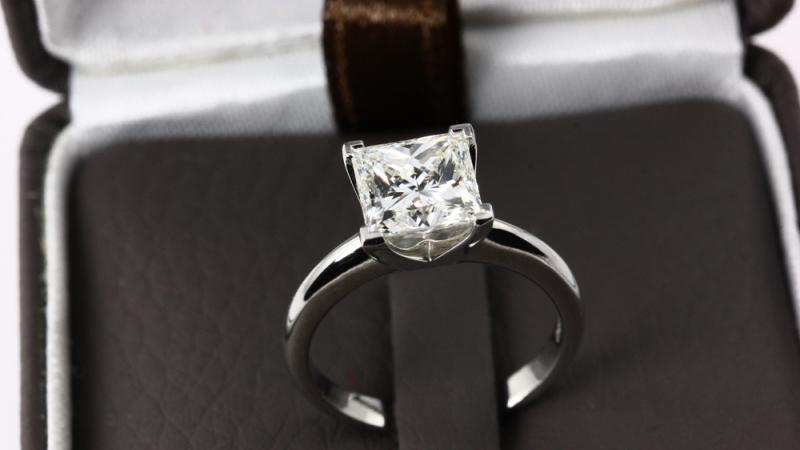
Monetary Perspective: Is It Worth It?
Now, let’s dive into one of the most crucial aspects if you’re considering a princess-cut diamond: the price.
Similar to all diamonds, the price of a princess-cut diamond is determined by various factors such as the quality of the cut, clarity, color, and carat weight.
To provide a reference point, let’s consider a princess-cut diamond with a clarity grade of VS2, an I color, and a weight of 1 carat. A diamond with these attributes can typically be purchased in the range of $3,500 to $3,700. This price falls in the middle range, neither excessively high nor exceptionally low for a gemstone of its kind.
Keep in mind that slight adjustments to the diamond’s characteristics can cause the price to fluctuate. It is possible to find a princess-cut diamond with slightly lower clarity or color grades for under $3,000, which can be considered a reasonable price point.
It’s important to remember that diamonds generally hold their value over time, although the market price may experience fluctuations. Factors such as the location of purchase, the presence of a certificate, and the specific certification type can all influence the diamond’s price.
As mentioned earlier, there might be diamonds with lower clarity grades that possess remarkable color. Don’t miss out on the opportunity to explore such options if they appeal to you.
Additionally, if you opt for a princess-cut diamond, keep in mind that you may potentially save some money on the setting itself. Allocate a few extra hundred dollars to invest in a higher-quality diamond. With princess-cut diamonds, the emphasis is primarily on the diamond rather than the setting or the overall ring design, allowing you to allocate more resources toward acquiring a superior-quality gemstone.
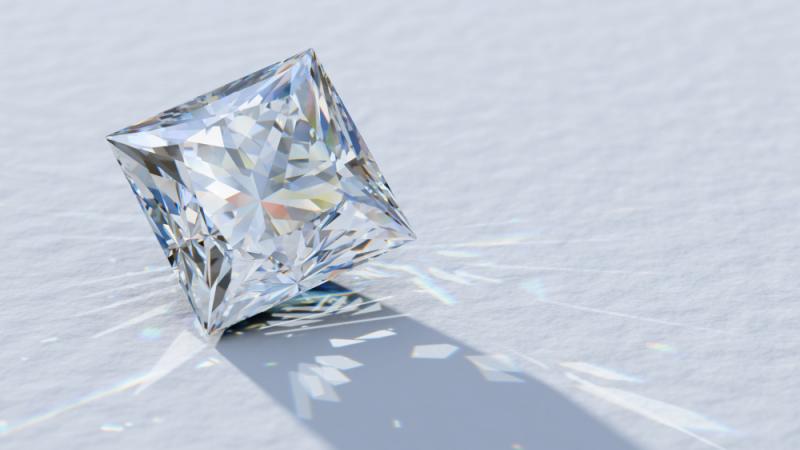
Growth In Popularity
We’ve emphasized numerous times the immense popularity of princess cut diamonds. While there may be a few contenders, princess cut diamonds undoubtedly hold a significant place among the most sought-after diamond cuts.
Despite the availability of diamonds that offer better price-to-quality ratios, princess cut diamonds continue to sell remarkably well. Their allure lies in their unique appearance, creating an optical illusion that makes it challenging to discern whether they are triangular or rectangular in shape. This captivating visual effect is a result of their well-crafted facets, adding to the allure and fascination of this diamond cut.
When princess cut diamonds were first introduced in 1980, they gradually started garnering attention. As a relatively new cut, it took some time for people to take notice. However, once they did, the popularity of princess cut diamonds began to skyrocket.
It’s worth mentioning the historical context surrounding this diamond cut. At that time, many available diamond cuts were considerably expensive, making diamond jewelry unaffordable for a majority of individuals. Princess cut diamonds emerged as a semi-accessible option for the “average person,” offering a balance between affordability and desirability.
This accessibility factor played a pivotal role in the enduring popularity of princess cut diamonds, propelling them to their current status.
While it’s true that there are more expensive diamond options available, it does not imply that they surpass princess cut diamonds in quality or desirability. This is an important consideration to bear in mind when exploring the market for these exquisite diamonds.
So, if you find yourself in the market for diamonds, remember the enduring appeal and unique qualities of princess cut diamonds.
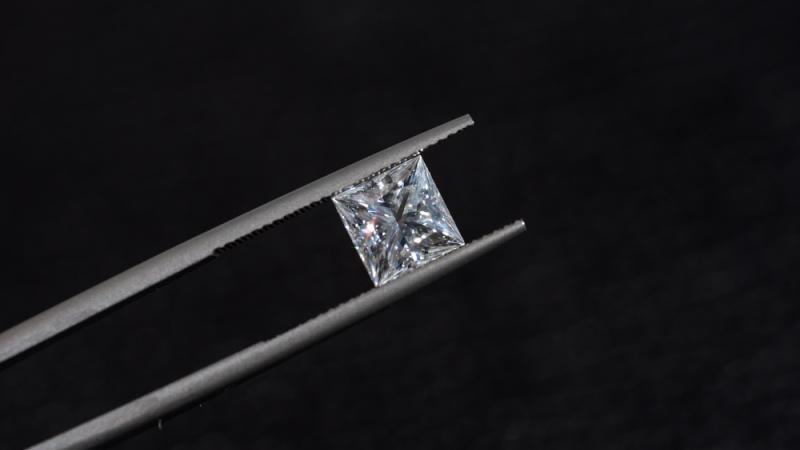
Conclusion
When it comes to diamonds, particularly princess cut diamonds, there’s a wealth of information to absorb and remember. Let’s summarize the key points:
Princess cut diamonds possess their own set of advantages and disadvantages, just like any other diamond. However, they also have unique qualities that set them apart from other diamond cuts.
Clarity plays a significant role in the value of these diamonds. Interestingly, due to the way princess cut diamonds are faceted, you might come across diamonds with lower clarity grades that appear nearly flawless to the naked eye. This presents an opportunity to save money while still enjoying a visually stunning diamond.
Given the influence of two remarkable diamond cuts, a princess-cut diamond is almost guaranteed to look beautiful on anyone’s hand, particularly that of a loved one. This is precisely why it has become such a popular choice for engagement rings.
We hope that the information we’ve provided has been useful, and if you’re in search of a ring, you may have just found your ideal candidate.


